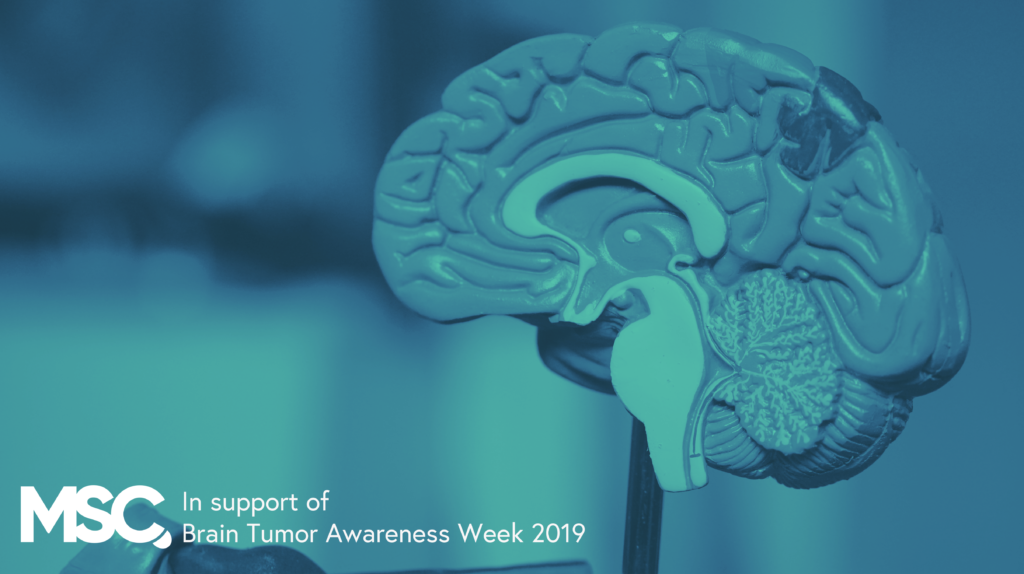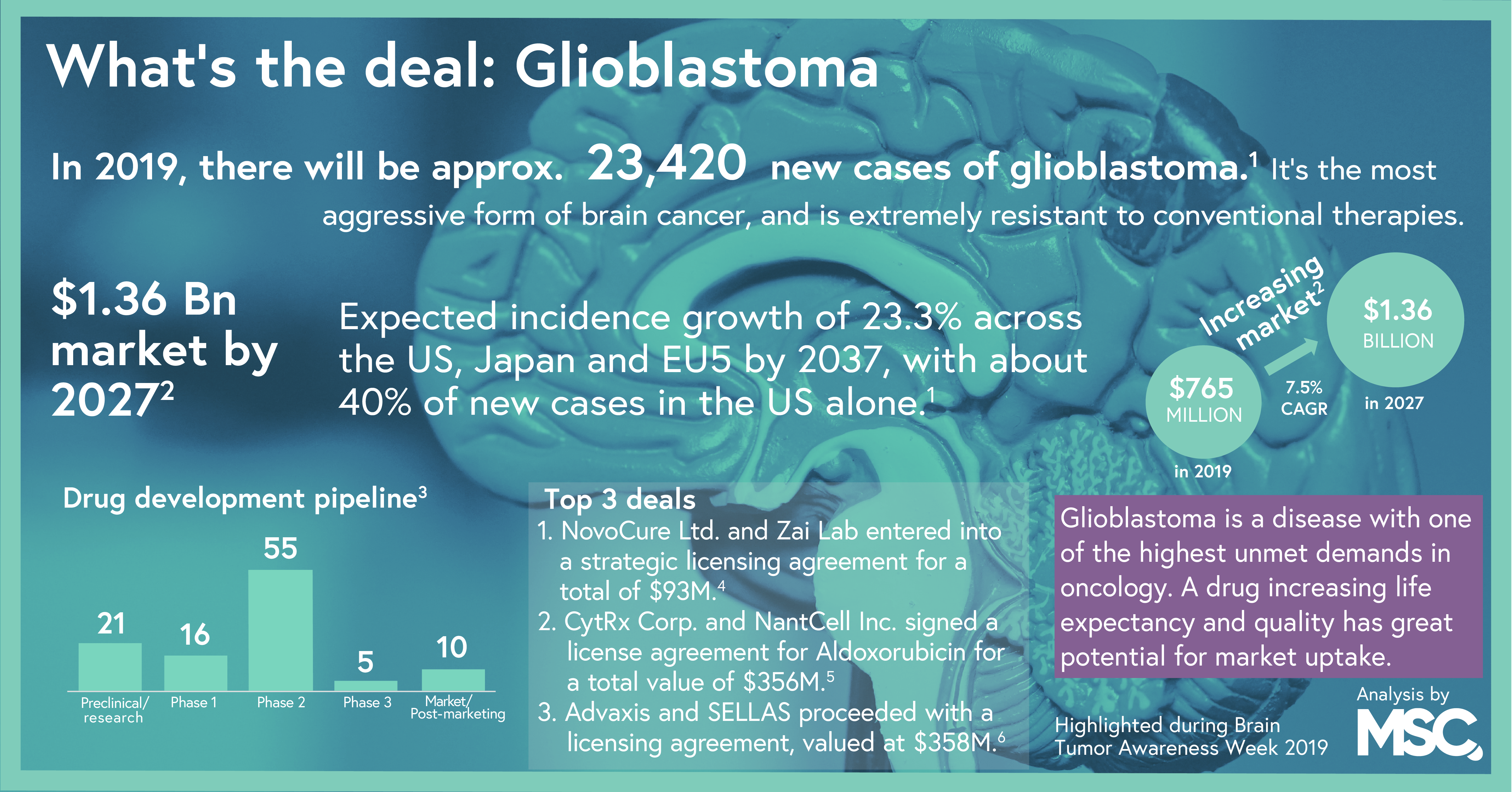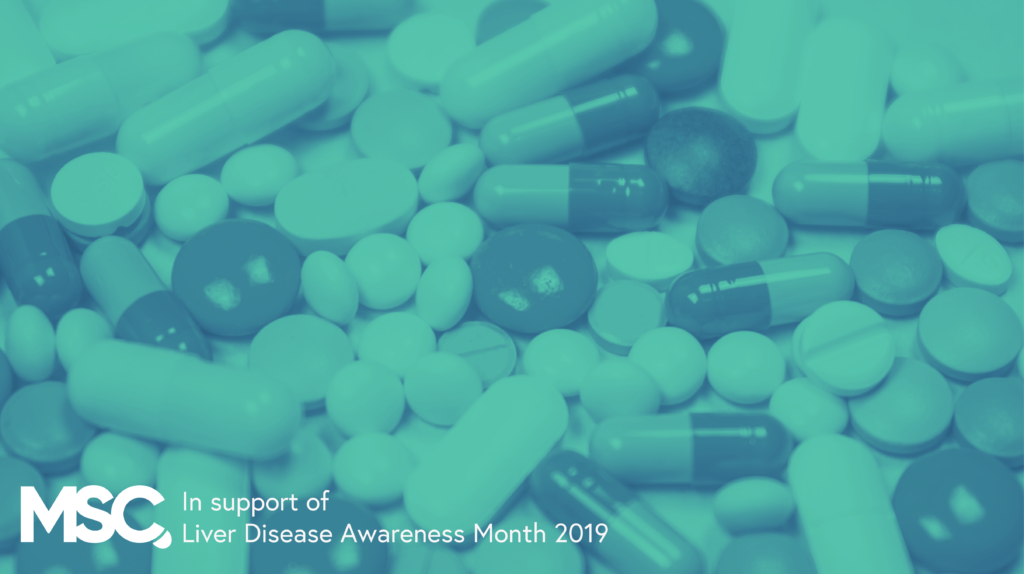
Today, the International Brain Tumor Awareness Week is in its midst. From October 26 to November 2, light is shed on the associated difficult conditions and we’d thought to look into the very aggressive form of cancer, glioblastoma. Glioblastoma is a type of brain tumor. In 2019, there will be approximately 23,420 incidences of glioblastoma, and it’s expected to rise by 23.3% across the US, Japan, EU5 and China by 2037. Glioblastoma is a difficult disease to treat, although therapeutic options are increasing. As the number of cases is growing, however, the need for new therapies follows creating a major demand for improved drugs.

What is glioblastoma?
Glioblastoma, also known as glioblastoma multiforme, is the most aggressive type of cancer that can occur in the brain or spinal cord. These malignant grade IV tumors are formed from astrocytes, cells dedicated for supporting nerve cells. Due to the location of the tumors, glioblastomas are very hard to treat and there is no real cure. The current standard treatments for adults with glioblastoma only allow for a survival rate of 11-31 months, depending on age and type of glioblastoma.
What causes glioblastoma and what are the risk factors?
The majority of glioblastomas occur without any inherited genetic factors, but rather randomly. One known risk factor for developing glioblastoma is prior radiation exposure to the neck and head area, such as those having undergone radiation therapy for leukemia, fungal infections of the scalp, or other types of brain cancer.
References:
- Informa (2018) Glioblastoma (GBM). Epidemiology. June 2018. [Online] [Accessed 25 Oct. 2019] https://service.datamonitorhealthcare.com
- GlobalData (2018) Global glioblastoma market set to reach $1.4bn by 2027. [Online] Available at: https://www.globaldata.com/global-glioblastoma-market-set-reach-1-4bn-2027/ [Accessed 25 Oct. 2019]
- Analysis by MSC based on data from Medtrack (Available with paid subscription)
- US Securities and Exchange Commission. Exhibit no. 99.1 to form 6-K. Available at: https://www.sec.gov/Archives/edgar/data/1704292/000156459018022999/zlab-6k_20180912.htm [Accessed 25 Oct. 2019]
- PRNewswire (2017). CytRx Corporation Announces Global Strategic License With NantCell Inc. For Aldoxorubicin, An Albumin Mediated Chemotherapeutic [Online] Available at: https://www.prnewswire.com/news-releases/cytrx-corporation-announces-global-strategic-license-with-nantcell-inc-for-aldoxorubicin-an-albumin-mediated-chemotherapeutic-300495897.html [Accessed 25 Oct 2019]
- Globe Newswire (2017). Advaxis and SELLAS Announce Licensing Agreement for Development of WT1 Antigen-Targeting Immunotherapy [Online] Available at: https://www.globenewswire.com/news-release/2017/02/27/927969/0/en/Advaxis-and-SELLAS-Announce-Licensing-Agreement-for-Development-of-WT1-Antigen-Targeting-Immunotherapy.html [Accessed 25 Oct 2019]



